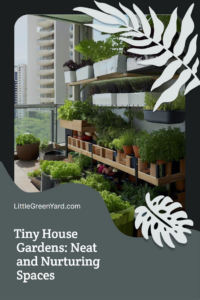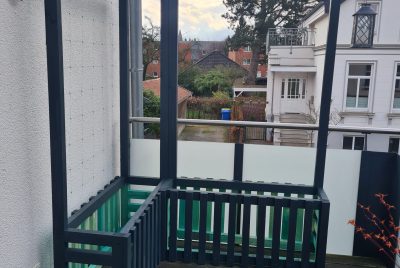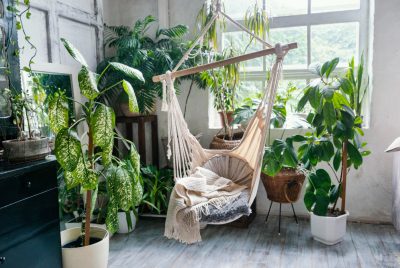Tiny House Gardens: Neat and Nurturing Spaces
As an avid enthusiast of tiny house living, I have come to appreciate the value of creating a harmonious and inviting outdoor space around these compact dwellings. While the limited square footage poses its own challenges, it is indeed possible to cultivate a beautiful and functional garden in even the tiniest of spaces. In this article, I will guide you through the common trends in maintaining neat and captivating tiny house gardens, offering helpful suggestions and explanations for each recommendation.
Understanding Tiny House Gardens
Definition and concept of tiny house gardens
Tiny house gardens refer to the gardens designed specifically for the compact and efficient living spaces of tiny houses. These gardens are usually smaller in scale, but they play a vital role in enhancing the overall living experience and connecting residents with nature. Despite the limited space, a well-planned tiny house garden can provide tranquility, beauty, and even the opportunity to grow fresh produce.
Benefits of tiny house gardens
There are numerous benefits to cultivating a tiny house garden. Firstly, it brings the beauty of nature closer to your doorstep, creating a sense of serenity and calm. Additionally, it allows for personalization and expression, as you can tailor the garden to your tastes and preferences. Furthermore, tiny house gardens can provide fresh herbs, vegetables, or flowers, contributing to a sustainable and self-sufficient lifestyle.
Designing a Neat Tiny House Garden
Utilizing vertical space
One of the key strategies for maximizing a tiny house garden is to utilize vertical space effectively. By incorporating vertical gardening techniques such as trellises, hanging baskets, or wall-mounted planters, you can create a green oasis without sacrificing precious floor space. Vining plants, such as tomatoes or cucumbers, thrive in this setup, adding a touch of lushness to your garden.
Choosing the right plants
When selecting plants for a tiny house garden, it is essential to consider their size, growth habit, and maintenance requirements. Opt for compact varieties or dwarf cultivars that won’t overcrowd the space. Additionally, prioritize plants that suit the environmental conditions of your region to ensure their longevity. Native plants are often a good choice as they are well-adapted and require less maintenance. If you are interested in growing vegetables, here are the top 5 easy-to-grow vegetables in small-scale gardens that are low in maintenance and produce high yields.
Incorporating container gardening
Container gardening is a fantastic solution for tiny house gardens, as it allows for mobility and flexibility. Select containers of various sizes and shapes to add visual interest to your garden. Furthermore, containers enable you to experiment with different plant combinations and easily rearrange them to create a fresh look. Remember to choose containers with good drainage and use high-quality potting soil.
Maintenance Tips for Tiny House Gardens
Proper watering techniques
Proper watering is crucial for the health and vitality of your tiny house garden. Since the available space is limited, it’s essential to avoid overwatering or underwatering your plants. Check the moisture level of the soil regularly and water accordingly. Consider using drip irrigation systems or self-watering containers to simplify the watering process and ensure optimal hydration for your plants.
Regular pruning and trimming
Regular pruning and trimming help maintain the neat appearance of your tiny house garden and promote healthy growth. Remove any dead or damaged plant parts to prevent the spread of diseases. Pay attention to the growth habit of each plant and prune accordingly to maintain their shape and prevent overcrowding. This practice also encourages air circulation and sunlight penetration, reducing the risk of fungal infections.
Soil care and fertilization
To ensure the long-term health of your tiny house garden, proper soil care is essential. Start by testing the soil pH and composition to determine if any amendments are needed. Add organic matter, such as compost or well-rotted manure, to improve soil structure and fertility. Additionally, apply balanced organic fertilizers or slow-release granules to provide essential nutrients for your plants’ growth.
Enhancing the Aesthetics of Tiny House Gardens
Adding decorative elements
To elevate the visual appeal of your tiny house garden, consider incorporating decorative elements. Install charming pathways made of gravel, stepping stones, or reclaimed materials to create a sense of enchantment. Introduce artistic sculptures, whimsical wind chimes, or bird feeders to add personality and attract wildlife. Be mindful of the scale and proportion of these elements to maintain a balanced aesthetic.
Using color schemes and textures
Playing with colors and textures is an effective way to create visual interest in a small garden space. Choose a cohesive color palette that complements the surroundings and your personal style. Experiment with contrasting or complementary colors to make focal points stand out. Furthermore, vary the textures of plants by mixing foliage with different leaf shapes, sizes, and textures, creating a captivating tapestry of greenery.
Creating focal points
Incorporating focal points adds depth and intrigue to your tiny house garden. Install eye-catching elements such as a small fountain, a vertical garden feature, or a colorful flower bed. These focal points draw attention and provide a sense of structure and purpose to the garden. Additionally, strategically placing mirrors or reflective surfaces can create an illusion of space and amplify the natural light.
Sustainable Practices for Tiny House Gardens
Water conservation methods
In a tiny house garden, water conservation is crucial. Consider collecting rainwater in barrels or installing a simple drip irrigation system. Mulching the soil with organic materials helps retain moisture and suppress weed growth. Moreover, grouping plants with similar water requirements together allows for more efficient watering. These sustainable practices not only conserve water but also promote the health of your garden.
Composting and organic gardening
Embracing organic gardening practices is not only beneficial for the environment but also enhances the health of your tiny house garden. Start composting kitchen scraps, yard waste, and fallen leaves to create nutrient-rich compost for your plants. This natural fertilizer improves soil structure, boosts plant growth, and reduces the need for synthetic chemicals. Additionally, consider introducing beneficial insects, such as ladybugs or bees, to control pests naturally.
Attracting beneficial insects
Encouraging beneficial insects in your tiny house garden helps maintain a balanced ecosystem and reduces the reliance on pesticides. Plant flowering species, such as marigolds, lavender, or cosmos, to attract pollinators like bees and butterflies. Additionally, consider including plants that provide shelter and food for beneficial insects, such as dill or fennel for ladybugs or parsley for swallowtail butterflies. Creating a welcoming environment for these allies contributes to the overall health and productivity of your garden.
We highly recommend to check out this guide on Permaculture Techniques for Container Gardening – excellent for homes with space constraints!
Overcoming Challenges in Tiny House Gardening
Limited space management
Managing limited space is a primary challenge in tiny house gardening. To optimize the available area, utilize vertical gardening techniques, incorporate raised beds or tiered planters, and make use of windowsills or balcony railings. Additionally, practice companion planting to maximize yield and save space. For example, interplanting lettuce and radishes or tomatoes and basil can utilize the vertical and horizontal space more efficiently.
Dealing with pests and diseases
Just like any garden, tiny house gardens are susceptible to pests and diseases. Monitor your plants regularly for signs of infestation or illness, and take prompt action if necessary. Introduce natural pest control methods like neem oil, insecticidal soaps, or companion planting with pest-repellent plants like marigolds or chives. Encouraging biodiversity and maintaining a healthy garden ecosystem will help minimize the impact of pests and diseases.
Seasonal adjustments and protection
Tiny house gardens may require seasonal adjustments to cope with extreme weather conditions. In colder regions, consider using protective covers or cloches to extend the growing season. Implement frost blankets or straw mulch to protect delicate plants during winter. In hot climates, provide shade structures or use shade cloth to shield plants from intense sunlight. Understanding your local climate and making appropriate adjustments will ensure the survival and success of your tiny house garden.
Final Words
In conclusion, creating and maintaining a neat and inviting tiny house garden is a rewarding endeavor. By understanding the unique needs and constraints of these compact spaces, you can design a garden that not only enhances the aesthetics but also provides a nurturing environment for plants to thrive. Utilize vertical space, choose suitable plants, implement proper maintenance techniques, and incorporate sustainable practices to optimize the limited area. Remember, a well-crafted tiny house garden can serve as an oasis of tranquility and a source of joy in your tiny house lifestyle.
FAQs
1. Can I grow vegetables in a tiny house garden?
Absolutely! Growing vegetables in a tiny house garden is not only possible but also highly rewarding. Select compact and space-saving varieties, utilize vertical gardening techniques, and practice companion planting to maximize your yield.
2. How often should I water my tiny house garden?
The frequency of watering your tiny house garden depends on various factors, including the plants’ water requirements, weather conditions, and soil moisture levels. It’s crucial to check the soil regularly and water when it starts to dry out. Avoid overwatering, as it can lead to root rot and other issues.
3. Can I create a tiny house garden indoors?
Yes, you can create a tiny house garden indoors, especially if you have limited outdoor space. Consider utilizing windowsills, hanging planters, or vertical wall gardens to grow a variety of plants indoors. Choose plants that thrive in low-light conditions if your indoor space doesn’t receive much sunlight.
4. How do I prevent pests in my tiny house garden?
To prevent pests in your tiny house garden, practice good garden hygiene by removing dead or decaying plant matter regularly. Encourage beneficial insects like ladybugs and lacewings, and consider using natural pest control methods such as neem oil or insecticidal soaps.
5. Can I start a tiny house garden if I have no gardening experience?
Yes, you can start a tiny house garden even if you have no prior gardening experience. Begin with easy-to-grow plants and gradually expand your knowledge and skills. Experiment, learn from your mistakes, and enjoy the journey of cultivating your tiny house garden.





